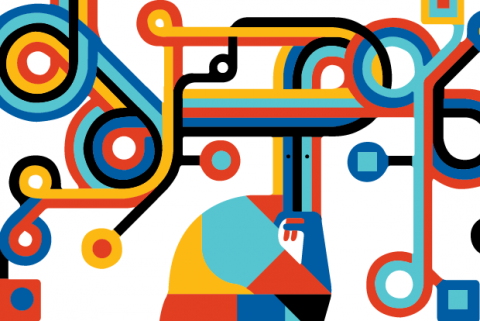What do Uber, Facebook, Alibaba, and AirBnB all have in common? They're all digital-first businesses and new leaders in long-established industries. They're proof that every industry is going digital, and at tremendous speed. Consider this:
“Uber, the world’s largest taxi company, owns no vehicles. Facebook, the world’s most popular media owner, creates no content. Alibaba, the most valuable retailer, has no inventory. And Airbnb, the world’s largest accommodation provider, owns no real estate,” writes Tom Goodwin, senior vice president of strategy and innovation at Havas Media.
These are all powerful reminders that, regardless of what industry you're in, going digital will play a huge role in your ability survive. Specifically, in the digital future:
Mobile will be how you'll deliver your digital business experience. The Internet of Things will be what your analog business will do in the digital realm. And the cloud will be where your digital business will run. And across all of these technologies, open source is leading the way and creating new categories of functionality. That's why I believe that if you want to be a player in this digital future, you must embrace open source and all that it enables.
I've been working with open source technologies for more than a decade, and in that time I've seen open source go from a cheaper alternative to proprietary software to becoming the primary source of innovation that is driving the industry forward. Just look at how fast new technologies such as containers, Hadoop, and OpenStack arrived. Even those industry-leading digital businesses I cited earlier are turning to open source technologies as a source of innovation.
Meeting mobile expectations
Let's begin with mobile. Going forward, your customers and users will expect to be able to interact with your services on their mobile devices. As your IT organization dives deeper into delivering new capabilities through a mobile experience, you're going to be focused on delivering applications that are secure, that can scale out in terms of how they provide capabilities, and you're going to want to create these applications very quickly.
These changes require new kinds of infrastructure, different architectures, and different development styles. The days of 18-month lead times are gone. Enterprise mobile applications need to be updated much more quickly. And if you look at the technologies that leading-edge IT organizations are using to power, build, and measure data from the next generation of applications, they're being powered and done on open source technology.
I've witnessed this shift in recent years and attribute it to the pace of innovation offered by open source solutions. Developing mobile experiences requires stitching together a variety of capabilities like analytics, scaling out application architecture, using different application frameworks, and implementing mobile back-end services. The flexibility and breadth of capabilities offered by open source solutions gives you a much better platform to start with and makes integration easier.
IoT is maturing
The future of IoT goes beyond having connected devices send data directly to the cloud. As IoT matures, devices are going to become more sophisticated, and the data associated with those devices will become increasingly voluminous and valuable. And, in many cases, processing and reacting to this data immediately is going to become increasingly critical.
Enterprises need more than just a good architecture and data to deploy IoT successfully. They also need to be able to manage important capabilities such as security, reliability, and the lifecycle of devices and gateways. As your organization advances its IoT efforts, intelligent gateways could help by projecting the power of the datacenter to close proximity of devices, providing real-time data collection, analytics, and automation for devices. Since your gateways need to be low cost relative to the devices to which they connect, open source is a great fit because it gives you the best value. Additionally, gateways need robust capabilities, and by leveraging the same, proven open source software from your data center you can count on those features.
Open source software is also a great fit for your IoT efforts because of the diversity of devices and standards you’ll encounter. By leveraging open source rather than proprietary software, it will be easier to deal with that diversity.
The role of cloud
To digitize your business, you need to provide a digital experience with mobile. And, you need to connect your analog business to the digital world with IoT. To power those workloads, you must be turning to the cloud. Only the cloud provides the agility, scalability, and new capabilities necessary to power your digital enterprise.
And when it comes to the cloud, most enterprises are going hybrid, leveraging both public cloud services and private cloud capabilities in their own environments. In doing so, these organizations likely are working with multiple vendors, different types of technologies, and implementing cloud in different ways across the business. For that reason, an open architecture is hugely important because you can’t standardize on just one platform. And, open source is driving the future of these new technologies across projects like OpenStack, containers, and Linux.
If you want to be a player in this digital future, I believe you must embrace open source and all that it enables.




